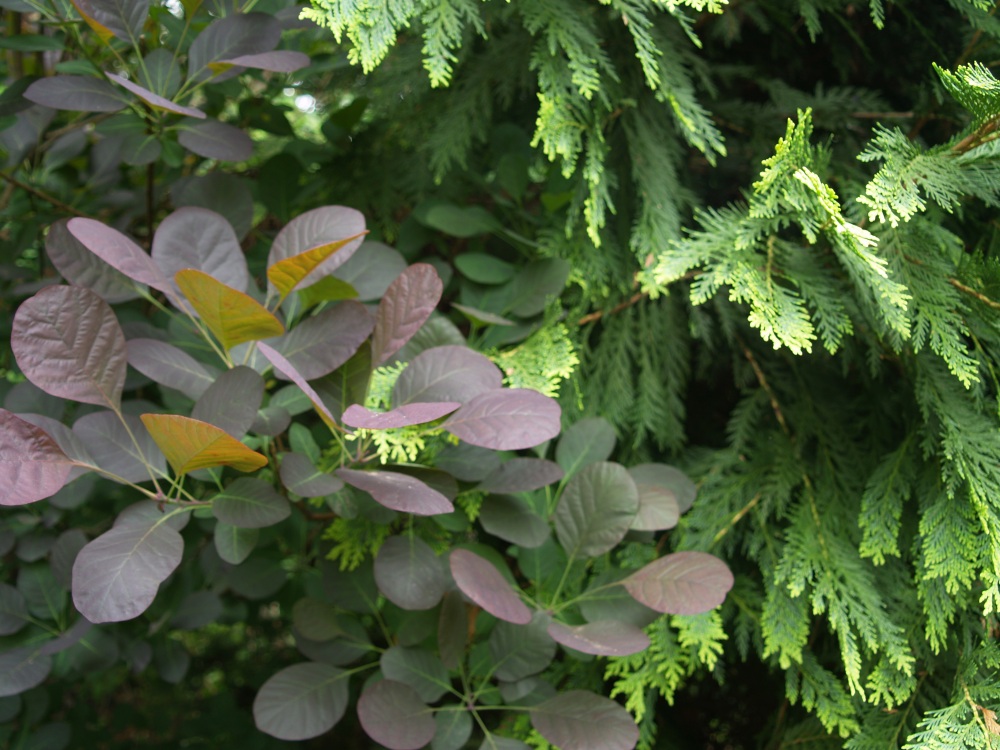I excuse that any old time garden must have its blights, and here there are several, mostly evergreens that have become excessively shaded so that lower foliage has browned. (Probably, there are more, which I will blissfully ignore.) Upper needles of a gold tipped Lawson cypress (Chamaecyparis lawsoniana ‘Golden Showers’) remain, but in the shade of Chinese dogwood (Cornus kousa) and purple leafed smoketree (Cotinus coggygria ‘Royal Purple’) a substantial portion on the lower half have turned to brown.
While deciduous neighbors are in full leaf, this browning is hardly evident, but in early January the image is somewhat distressing, testimony to less than stellar planning two decades earlier. Imagine, golden needles flanked by rounded, deep purple leaves of the smoketree, and larger, dark green foliage of the dogwood. For some period (I will presume to be most of two decades), the effect was splendid, but as often happens, complications arise to spoil the gardener’s best plans.
There should be no shame in creating beauty that lasts for only a decade, and of course too many gardeners dismiss long term planning with the thought they will have moved on when the worst comes. But, I’m still here, and while this shading and browning of needles is far from the worst that could occur, there comes a time to recognize that removal of a few browning evergreens might improve the garden despite memories of what once was.
The stumbling block in this is the labor required to remove disfigured evergreens, and the threat of injury to neighbors. A long blighted Alberta spruce (Picea glauca ‘Conica’), a dwarf that had grown to twelve feet, but without live needles on its lower half, was recently removed. Though neighboring pieris and boxwood were in close proximity, a narrow path allowed the spruce to fall without damage.
Though I am not fond of limbed up evergreens, lower branches of a neighboring Hinoki cypress (Chamaecyparis obtusa ‘Gracilis’) were removed, with the resulting open space still shady and perfectly suited for the addition of hostas, hellebores, and a few ferns in the spring. This planting, I’m certain, will manage far better than the poor spruce, and here is one less blight.
Ah gardening is never ending in changes.